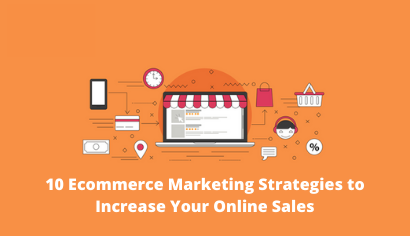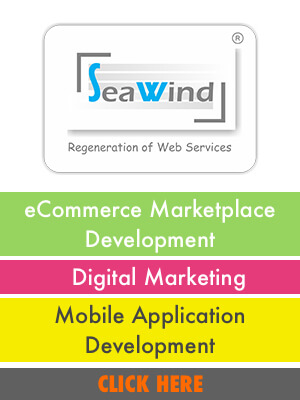An eCommerce brand needs some eCommerce marketing strategies to obtain new customers as well as entice old customers to keep coming back to your store. With these proven eCommerce marketing strategies and tips, we are going to teach you how to bring in traffic to your site, build relationships and trust with customers, and get back those lost sales. Ready to grow your eCommerce business?
1. Define Your Sales Cycle
Every business is unique. How long does it take before a customer makes a purchase on your site? Knowing how customers move through your sales process can be helpful so that you can create the best eCommerce marketing strategies possible.
If you don’t know how long it takes a customer to complete your sales cycle it will be difficult to pinpoint which platforms you should be advertising on, when you should be aggressively retargeting or sending emails. Does your customer convert in a week, a month, a year? Defining your sales cycle will require some research as well as testing. Once you have this down you can move on to our next eCommerce marketing strategies.
2. Optimize Your Checkout Process
Decrease cart abandonment by optimizing your checkout process. This is one of those eCommerce marketing strategies that is often neglected by businesses but it is possibly the most important one! You spend so much time building trust with potential customers to get them to purchase from you and you need to continue building that trust throughout your checkout process. If your checkout process is smooth and trustworthy from start to finish, you will increase conversion rates and decrease cart abandonment. The next five eCommerce marketing strategies are helpful when optimizing your checkout page.
3. Make your checkout process as easy as possible
Try to get everything on one page. If you have to have several pages, consider showing a progress bar at the bottom of each page so that your customers can visualize how much longer your checkout process will take. Make buttons easy to find – the more time a customer spends looking for the next button or the checkout button the quicker they can become frustrated with your site.
Francesca’s is a clothing store that has an easy checkout process. They have three sections all on one secure checkout page. The first section is for shipping information, the next for billing and finally, you can review your purchase. They include a photo of the product or products you are purchasing and break down your total amount so that you can see how much you are paying for shipping. You can also easily see all of the information you have entered and go back to make corrections without hitting the back button.
4. Give customers (and search engines) helpful product descriptions
If you are selling any type of clothing or accessory, provide a size guide. Not only will this help customers but it will cut back on returns for your business. You may want to include customer reviews or testimonials as well. Make sure you have a page dedicated to frequently asked questions. This can also be beneficial to your SEO if you write quality descriptions that include keywords. Brush up on what SEO is and how it works before you dive in. Optimizing your descriptions will help you move up in search rankings which means more visibility for your business which can lead to more sales.
Each one is helpful for customers and includes keywords for search engines. These details tell customers what the product is made out of, the size, fit, and fabric, how to clean it, and even tells customers the height of the model in the photo. You don’t have to go all out like Asos, but the more effort you put into your descriptions, the easier it will be for your customers. Not only will they be able to easily find your products, but it will also be easier for them to make a purchase decision.
5. Show shipping costs.
No one likes to go through the process of typing all of their information in to your site and get all the way to the end only to find out that there is a huge shipping cost. Be upfront with customers. If you can, let them know how much they will be paying at the beginning of your checkout process. Or charge a flat rate shipping if this is an option for your products.
In addition to being upfront about your shipping costs, give customers an idea of when their products will arrive or if there are any other shipping details they need to be aware of.
Francesca’s also shows shipping costs before you go to purchase your items and they offer the option to checkout with PayPal which is a trusted platform that many shoppers already use. If shoppers already have a PayPal account this expedites their checkout.
Another handy thing that PayPal and many other eCommerce brands are doing now is sending receipts through Facebook messenger. This makes it so easy for customers to keep track of their purchases. The easier you can make it for customers to purchase or return products, the more likely they are to return to your online store.
6. Give customers the option to keep shopping.
If customers are given the option to keep shopping before they check out they might consider it and continue checking out. But a lot of the time customers will continue to browse your site just to make sure they didn’t miss anything. Ecommerce marketing strategies like this are easy to incorporate into your checkout process. Simply add a “keep shopping” button next to your “continue checkout” button. Make sure they are both easy to find on your web page.
7. Let customers know what forms of payment you accept.
You can add the logos of what types of credit cards your store accepts. This helps build trust with shoppers and makes them feel safe when they are entering their credit card information. Add popular security seals to increase trust as well. If customers recognize a security logo they will feel at ease knowing their credit card information is in good hands.
Francesca’s shows this popular security seal during their checkout process. It is easy to see and appears above the fold of the page. This can be a game-changer for your checkout process.
8. Retargeting
98% of users do not convert on their first visit to a website. If you want to capture those sales you will need to have retargeting e-commerce marketing strategies in place. There are several ways you can retarget customers so that they return to your site to purchase your product. One of the most popular ways is to run retargeting ads on other websites. When a customer comes to your site and leaves without buying, you can use other sites that they are visiting to show your products. Pretty cool right? You can also retarget customers with email campaigns. Have you ever added items to your cart in an online store without purchasing and then received an email a few days later that looked something like this?
If so, you have just been retargeted. These emails may entice you to purchase items you have left behind or to shop for other similar/complementing items on the same site. This will increase traffic to your site which can get you more conversions aka more sales.
9. Email Marketing and Automation
Email marketing has a median return on investment of 122% which is 4 times higher than channels like social media, direct mail, and paid search. Building an email list is as easy as enticing users to give you their emails when they make a purchase. You can also collect emails through social media campaigns and on your website in exchange for coupons or discounts.
Creating an email marketing strategy can involve stand-alone emails as well as automation. Read up on how to improve your B2C email marketing campaign. You can even set up email automation like cart abandonment, welcome automation, and order automation.
Cart abandonment emails retarget customers when they leave something in their carts. You have probably received one before reminding you to go back and purchase the items in your cart. It’s one of those “friendly reminder” eCommerce marketing strategies that will help your business regain those lost sales.
Welcome automation is great so that customers automatically receive an email when they first sign up to get your emails. You can include a short message about your brand and how you are happy to have them on board. If you want you can even include a coupon to entice them to purchase from your store.
Order automation is perfect for keeping customers up to date on their purchases. There are several emails that can be a part of this automation including a confirmation email letting the customers know you have received their orders, a shipping email confirming that the items have shipped and an email saying their products have been delivered. You can even send a fourth email asking how they like their products.
Asking for feedback or reviews is one of those eCommerce marketing strategies that is really easy to incorporate into any automation you may already have. After your customers receive your product ask for feedback! You can ask customers to simply rate your product or to leave a review. This is helpful for other customers when they are shopping for your products and it’s helpful for your business so that you can continue growing and improving. Optimize your emails for mobile devices. Just like optimizing your website to be mobile-friendly, your emails should also be easy to interact with on various devices. Don’t lose subscribers because they can’t view your emails on their smartphones. Most email APIs like MailChimp or Active Campaign already optimize your campaigns for mobile but it doesn’t hurt to double-check to see if all of your photos, text, and logos look good before you send.
10. Update Your Website
If your business has been around for a while, you may want to consider a site update. Older sites tend to look spammy. People trust things that are familiar so if your site is similar to other sites with regards to design, your customers will feel safe and comfortable. If you don’t believe us, which site would you trust?
This is the Apple website in 1998. If you saw something like this on the web today, you probably would be wary of making a purchase but 20 years ago this was the norm.
Today Apple has a clean and sleek site that is aesthetically pleasing. Their up-to-date design puts users at ease and comes off as trustworthy.
Design is constantly changing so make sure you are up to date on the latest trends. Check out our eCommerce website design tips that build trust and increase sales!
*Bonus Tip* Sell Your Products on a Third Party Site
We have used several Amazon examples above because they know how to market, retarget, and are growing extremely fast. Using a third-party site, like Amazon, to sell your products is great for small businesses that are just starting out. There are a lot of costs to consider when building an eCommerce site. You will have to purchase hosting as well as your own domain and you will probably need to hire an eCommerce website design expert to build your site. Third-party sites allow you to create a seller account at little to no cost, although there may be charges associated with actually selling your products. They can also help your business to gain exposure.
Again, this is a great starting point for small businesses to give them a boost when they are first selling products. In the long run however you will want to build your brand away from third-party sellers and create your own eCommerce site to sell your products.
When it comes to figuring out which eCommerce marketing strategies work best for your business, experiment and get creative. What can you do better than your competition? These strategies will help you build trust and create a following of loyal customers that purchase from your business time and time again.








Post your comments
You must be logged in to post a comment.